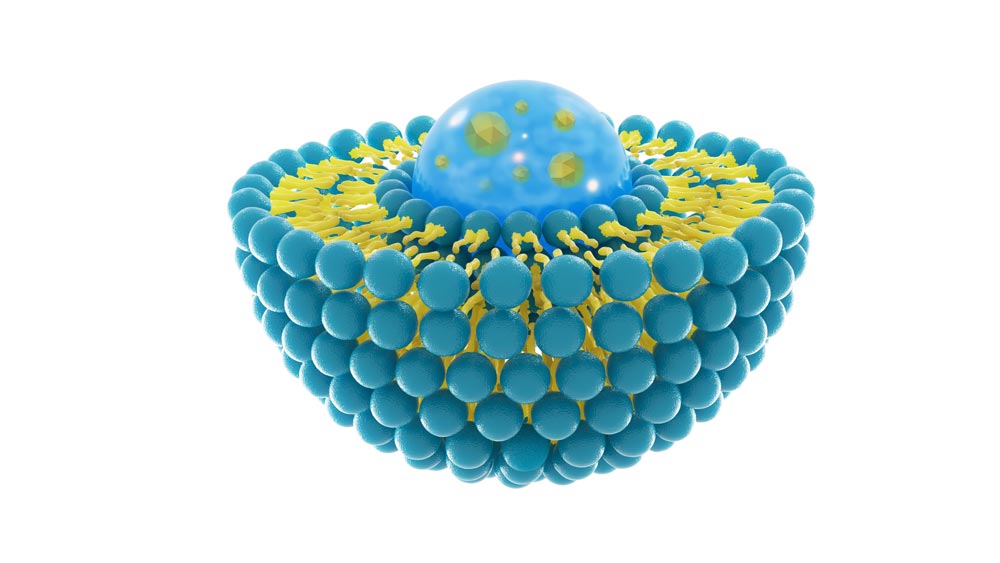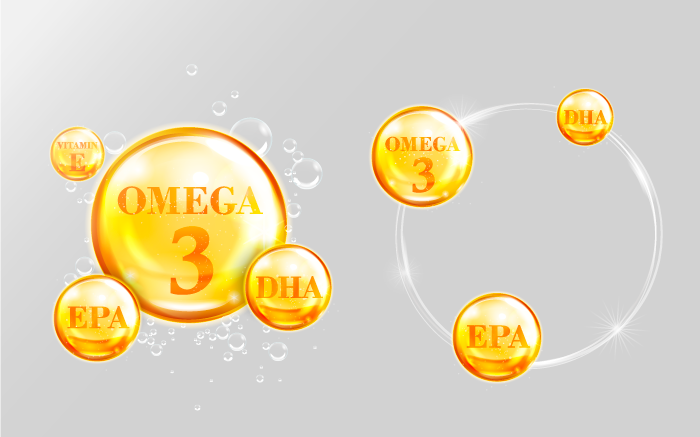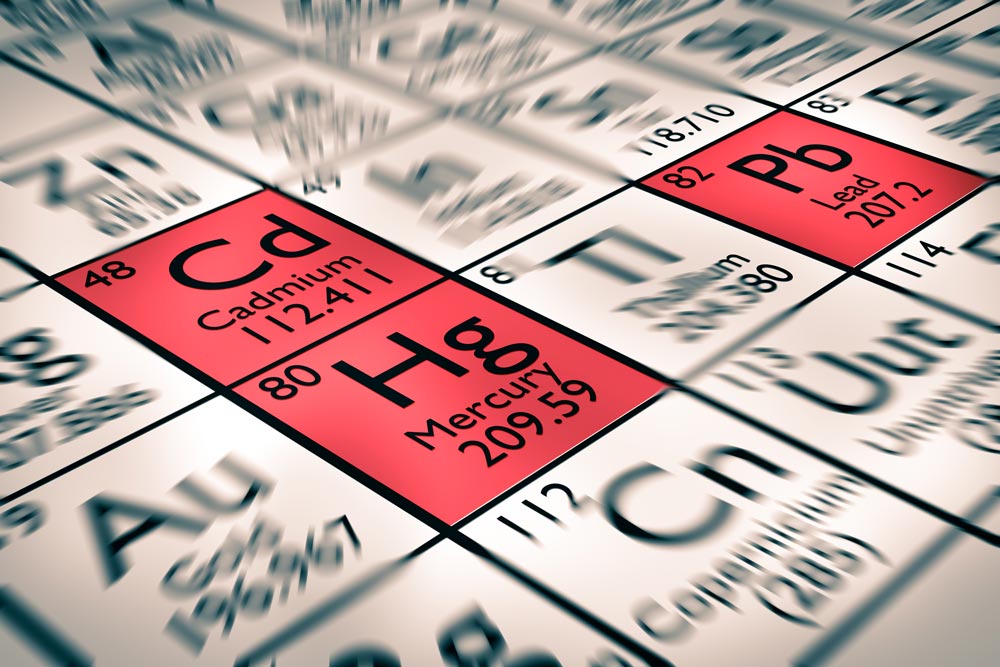[disclosure]
You’ve most likely heard of fish oil and someone close to you has probably suggested you take some. It is one of the supplements that we prescribe most often, but what is fish oil exactly and why is it so beneficial to our health? Let’s take a closer look.
What exactly is Fish Oil?

Fish Oil consists of fatty acids that are essential for life. They are present in the diet in solid fats, liquid oils, and part of the cell membranes we ingest through whole foods. They are broken down in our body by our bile acids into small fat droplets (just like dish soap breaks down grease). This allows lipase, our fat digestion enzyme, to break them down further into their constituent parts, glycerol and free fatty acid. The body then uses these individual building blocks to form cell membranes, supply energy, or control hormones. Fatty acids come in different forms: polyunsaturated, monounsaturated, and saturated. Polyunsaturated means more than one double-bond, monounsaturated means one double-bond, and saturated means no double bonds (having no double bond means the carbon atoms are fully filled or “saturated” with hydrogen atoms). The most widely used naming convention is based on the omega naming system which indicates where the double bond is in relation to the methyl end of the molecule (e.g. the double bond in omega-3 is 3 atoms away from the methyl end), but even though it may help your trivia prowess, it’s not important for this discussion.
What is so Important About Fish Oil?

The fatty acids present in fish oil are called omega-3 fatty acids, which are a type of polyunsaturated fatty acid. There are 3 main omega-3 fatty acids – EPA (EicosaPentaenoic Acid), DHA (DocosaHexaenoic Acid), & ALA (Alpha-Linolenic Acid). ALA is considered an essential amino acid, which means we can’t make it on our own since we lack the enzyme to make it so we need to get it in our diet (vitamin C & folate are other nutrients in which we lack the enzyme to make on our own). ALA is found in plant sources (flax, chia seeds, and walnuts are great sources), but since we eat such little amounts of seeds, nuts, and vegetables in the standard american diet, ALA deficiency is very common. EPA & DHA are conditionally essential amino acids, which means our bodies can make it. We can make EPA & DHA from the ALA in our diet, but the conversion rate is very inefficient ((Calder PC, Yaqoob P. Understanding omega-3 polyunsaturated fatty acids. Postgrad Med. 2009 Nov;121(6):148-157.)) (between 5-20% according to your genetic make-up). Additionally, the conversion rate decreases as we age and also decreases with alcohol use. The conversion rate of ALA to EPA/DHA is dependent on zinc, magnesium, B6, and vitamin C, which are all common deficiencies in western populations due to depleted soil amounts, use of inorganic fertilizers, and alcohol use. This further increases the demand for EPA and DHA intake in our diets. A diet deficient in EPA & DHA results in altered cell membranes leading to the cell’s inability to hold water, vital nutrients, and electrolytes. The cell also loses its ability to communicate with other cells and be controlled by regulating hormones. These dysfunctions are a major factor in almost every chronic disease state. An imbalance of omega-6 to omega-3 fatty acids also leads to an increased inflammatory state. Westernized societies use omega-6 fats such as corn and soybean oil in all processed foods. Even worse is they use corn and soy “grains” to feed our livestock causing an imbalance in them as well. When we eat this unnaturally farmed livestock, we increase this imbalance. The ideal omega 6:3 ratio is 1:1, however, in Westernized societies it is common to find ratios of 25:1, sometimes even 50:1. Certain conditions don’t respond to treatment unless the ratio falls below a certain level. In asthma that ratio is less than 4:1 and in RA it’s even less at 3:1. We use a lab test called the Omega Index to test this ratio routinely in our patients and it’s almost always high.
Food vs Supplements?

We normally recommend that vitamins, minerals, and phytonutrients be obtained from food as much as possible, but taking certain supplements like a high quality multivitamin, a high CFU multistrain probiotic, magnesium, vitamin D/K2, a fiber supplement, and an IFOS certified fish oil are things that we recommend to a large number of our patients. We agree with the viewpoint of Dr. Roger Williams, an American biochemist at UT Austin, who coined the term “biochemical individuality” which is one of the tenets of functional medicine. Dr. Williams discovered pantothenic acid, which is the backbone of acetyl-CoA, a major constituent in energy production and metabolism. Dr. Williams viewed vitamin supplementation as an “insurance formula” against possible deficiency. This doesn’t mean that the deficiency will occur in the absence of the supplement, any more than not having homeowners insurance means that your house is going to burn down or crumble to the ground. Given the large individual differences in each person’s biochemical make-up, vitamin and mineral needs are highly variable and often times require supplementation to reach optimal levels even with a healthy diet. One caveat is that supplements can not replace the benefits of a whole food, organic, mostly plant-based diet. Supplementing with certain vitamins can be dangerous, especially while eating the standard American diet so consult your physician prior to adding any supplement to your daily regimen.
Since we do recommend supplementation in the majority of our patients, we need to be assured of the quality of our supplements and our recommendation for fish oil is no different. Fish oil that has been sitting in a hot warehouse for months will not make our cut and could possibly be harmful. There is a company called Nutrasource that performs certification tests on consumer products so consumers can have confidence that the products they are purchasing contain what is listed on the product label. Nutrasource has a Fish Oil certification program called IFOS (International Fish Oil Standards) and it tests fish oil products in 4 different categories: 1. Potency, 2. Purity, Safety, & Cleanliness, 3. Stability, & 4. Heavy Metals.
Let’s dig deeper into each category:
1. Potency

This tests the amount of DHA, EPA, and total omega-3s in the products to see if it is consistent with the label. There are numerous benefits to taking a fish oil supplement with both EPA & DHA, including, lowering systemic inflammation, decreasing insulin resistance((Luo J, et al. Dietary (n-3) polyunsaturated fatty acids improve adipocyte insulin action and glucose metabolism in insulin-resistant rats: relation to membrane fatty acids. J Nutr. 1996;126(8):1951-1958.)), and lowering triglycerides.((Friedberg CE, et al. Fish oil and glycemic control in diabetes. A meta-analysis. Diabetes Care. 1998;21(4):494-500.))
- EPA – EPA deficiencies have been associated with neurological conditions, depression, bipolar disorder, arthritis, heart disease((Harris WS, Poston WC, Haddock CK. Tissue n-3 and n-6 fatty acids and risk for coronary heart disease events. Atherosclerosis. 2007;193:1–10.)), cancer, accelerated aging, and autoimmune disorders as a result of inflammatory responses.
- DHA – DHA activates Nrf2 (which is basically the body’s anti-inflammatory system, opposite to nf-kB), increases BDNF((J Neurotrauma. 2004 Oct;21(10):1457-67. doi: 10.1089/neu.2004.21.1457.)), lowers risk of Alzheimer’s((Morris, M.C., et al., Arch Neurol 60: 940-946; July, 2003))((The Framingham Heart Study Schaefer, E., et al., Archives of Neurology 63: 1545-1550; November, 2006)), and lowers risk for cardiovascular events and atherosclerosis.((Harris WS, Poston WC, Haddock CK. Tissue n-3 and n-6 fatty acids and risk for coronary heart disease events. Atherosclerosis. 2007;193:1–10.))
2. Purity, Safety, & Cleanliness

This tests PCBs, Dioxins & dioxin-like PCBs, & Furans.
- PCBs – PCBs are one of the 12 “Dirty Dozen” POPs – a group of dangerous chemicals known as persistent organic pollutants. Before 1977, PCBs were used as insulation, coolants, and lubricants in transformers, capacitors, vacuum pumps, gas‐transmission turbines, hydraulic fluids, and other electrical equipment; as fillers in casting waxes; as plasticizers in paints, plastics, and rubber products; and in surface coatings, sealants, caulking compounds, fire retardants, dedusting agents, glues, inks, pesticides, and carbonless copy paper. Products made before 1977 that may still contain PCBs include old fluorescent lights, electrical devices, and microscope hydraulic oils. U.S. production of PCBs stopped in 1977 because of suspected harmful health and environmental effects; exports and imports of PCBs stopped in 1979. PCBs are likely to cause cancer and are listed as a ‘probable carcinogen’ by the EPA.((Ward M H, Colt J S, Metayer C, et al. 2009. Residential Exposure to Polychlorinated Biphenyls and Organochlorine Pesticides and Risk of Childhood Leukemia. Environ. Health Perspect. 117(6):1007-13.)) PCBs suppress the immune system((Weisglas-Kuperus N, Patandin S, Berbers GA., et al, 2000. Immunologic effects of background exposure to polychlorinated biphenyls and dioxins in Dutch preschool children. Environ Health Perspect. 108(12): 1203–7.))((Weisglas-Kuperus, N., Vreugdenhil, HJ., Mulder, PG., 2004. Immunological effects of environmental exposure to polychlorinated biphenyls and dioxins in Dutch school children. Toxicol. Lett. 149(1-3): 281–5. )), and thyroid function((Schell L M, Gallo M V, Denham M, Ravenscroft J, DeCaprio A P, Carpenter D O. 2008. Relationship of Thyroid Hormone Levels to Levels of Polychlorinated Biphenyls, Lead, p,p′- DDE, and Other Toxicants in Akwesasne Mohawk Youth. Environ Health Perspect. 116(6): 806–13. )). PCBs cause an elevated risk of cardiovascular disease((Goncharov A, Haase R F, Santiago-Rivera A, et al. 2008. High serum PCBs are associated with elevation of serum lipids and cardiovascular disease in a Native American population. Environ Res. 106(2):226-39.)), hypertension((Goncharov A, Bloom M, Pavuk M, Birman I, Carpenter D. 2010. Blood pressure and hypertension in relation to levels of serum polychlorinated biphenyls in residents of Anniston, Alabama. J Hypertens 28(10):2053-60.)), and diabetes((Lee D H, Steffes M W, Sjödin A, Jones R S, Needham L L, Jacobs D R Jr. 2010. Low dose of some persistent organic pollutants predicts type 2 diabetes: a nested case–control study. Environ Health Perspect. 118(9): 1235–42.)). PCBs also cause porphyrinuria((Doss MO. Porphyrinurias and occupational disease. Ann N Y Acad Sci. 1987;514:204-18. Review. PubMed PMID: 3327428.)) which is linked to oxidative damage and kidney disease((Nicolas Pallet, Alexandre Karras, Eric Thervet, Laurent Gouya, Zoubida Karim, Hervé Puy; Porphyria and kidney diseases, Clinical Kidney Journal, Volume 11, Issue 2, 1 April 2018, Pages 191–197, https://doi.org/10.1093/ckj/sfx146)).
- Dioxins, dioxin-like PCBs, & furans – Dioxins & dioxins-like substances are another “dirty dozen” POP. Dioxins are of concern because of their highly toxic potential. Experiments have shown they affect a number of organs and systems. Short-term exposure to high levels of dioxins and dioxin-like substances in occupational settings or following industrial accidents may cause skin lesions known as chloracne, which is persistent((WHO (2002). Polychlorinated dibenzodioxins, polychlorinated dibenzofurans, and coplanar polychlorinated biphenyls. In: Safety evaluation of certain food additives and contaminants. Geneva, World Health Organization)). Longer-term environmental exposure causes a range of toxicity, including immunotoxicity, developmental and neurodevelopmental effects, and effects on thyroid and steroid hormones and reproductive function. The most sensitive life stage is considered to be the fetus or neonate. Guidance values have been based on reproductive and developmental effects((IPCS (2003). Polychlorinated biphenyls: Human health aspects. Geneva, World Health Organization, International Programme on Chemical Safety (Concise International Chemical Assessment Document 55))((IPCS (1993). Polychlorinated biphenyls and terphenyls, 2nd ed. Geneva, World Health Organization, International Programme on Chemical Safety (Environmental Health Criteria 140)). Many dioxins are listed as group 1 carcinogens (known carcinogens) or group 2 carcinogens (probable human carcinogens)(( https://www.cancer.org/cancer/cancer-causes/general-info/known-and-probable-human-carcinogens.html ))((IARC (1997). Summaries & evaluations: Polychlorinated dibenzo-para-dioxins. Lyon, International Agency for Research on Cancer, p. 33 (IARC Monographs on the Evaluation of Carcinogenic Risks to Humans, Vol. 69))((IARC (in preparation). A review of human carcinogens. F. Chemical agents and related occupations. Lyon, International Agency for Research on Cancer (IARC Monographs on the Evaluation of Carcinogenic Risks to Humans, Vol. 100) [summary in Baan R et al. (2009). A review of human carcinogens—Part F: Chemical agents and related occupations. The Lancet Oncology, 10(12):1143–1144))((IARC (1987). Summaries & evaluations: Polychlorinated biphenyls (Group 2A). Lyon, International Agency for Research on Cancer, p. 322 (IARC Monographs on the Evaluation of Carcinogenic Risks to Human, Supplement 7))
3. Stability

This tests anisidine, peroxide, TOTOX, and acid value. When oils oxidize, they create new byproducts (free radicals) that don’t exist in the fresh oil. These byproducts typically give off the fishy taste and smell associated with old fish. The peroxide and anisidine measurements give an indication of how many of these byproducts have formed in the oil. The TOTOX value, which is calculated using the peroxide and anisidine measurements, provides an overall picture of how fresh the oil is. All polyunsaturated fatty acids, including fish oil, are prone to degradation and spoiling. In the presence of ultraviolet light or heat, free radicals are created that cause a kink in the structure of the fatty acid preventing it from stacking properly leading to dysfunction. This happens when fish or cooking oils are cooked using high heat or even stored in hot warehouses. Adding a high quality fish oil supplement can help mitigate the ingestion of these free radicals. (We recommend this one here, and it can be purchased here). Fish oil that is not IFOS certified may still contain byproducts from the fatty acids that have been damaged by free radicals if they were not formulated adequately, not handled properly during manufacturing, or if they were stored in unsuitable conditions, so make sure you’re not just grabbing fish oil off of the store shelves.
4. Heavy Metals

This tests mercury, lead, total arsenic, & cadmium.
1. Mercury
Mercury is a neurotoxin and is one of the top 10 chemicals of major public health concern by the World Health Organization (dioxin & dioxin-like compounds, cadmium, and arsenic are also on this list)(( https://www.who.int/ipcs/assessment/public_health/chemicals_phc/en/ )). Do you remember the Mad Hatter in Alice in Wonderland? There is a bit of truth to that fictional character. Back in the 1800s, people that made hats discovered that if they used mercury it would stabilize the wool in the felting process of hat making. These ‘hatters’ eventually got dementia & central nervous system disorders called erethism, also known as mad hatter disease((Broad, WJ, Sir Isaac Newton, Science. 18 Sep 1981: Vol. 213, Issue 4514, pp. 1341-1342, 1344)).
There are 2 types of mercury:
- Inorganic mercury, also known as elemental mercury, is the type of mercury in dental amalgams (fillings).
- Organic mercury, also known as methylmercury, is found in fish and shellfish.
Both types of mercury contribute to the neurotoxicity of mercury. Glutathione is the primary antioxidant in both inorganic mercury and methylmercury detoxification. If you still have silver dental fillings you will want to get those removed, but will need the assistance of a biological dentist that uses SMART protocols, focusing on minimizing mercury exposure to bodily tissue when removing the amalgams. More info can be found here. Working with a functional medicine practitioner in conjunction with your biological dentist is the best choice. In regards to methylmercury, when choosing fish to include in your diet, avoid large-mouthed, long-lived predatory species such as sharks, swordfish, and tuna, since these are the highest in mercury, and focus instead on SMASH fish: Salmon, Mackerel, Anchovies, Sardines, Herring. Not only are SMASH fish low in mercury, but they are also high in vitamin D, selenium, and iodine. Think immune and thyroid function. Be sure to choose wild-caught and not farmed as they have higher Omega-3 content and lower biotoxins. The problem is, even if you focus on SMASH fish to get your recommended omega-3 doses, you will still get a small amount of mercury and other biotoxins that they have eaten or absorbed. Unfortunately, runoff from agricultural processes dumps millions of metric tons of mercury and organic carbon into our rivers and streams which eventually makes it to our oceans. This leads to a bioaccumulation of methylmercury in the small zooplankton on the bottom of the food chain, eventually ending up in all of the fish that humans like to eat(( https://news.rutgers.edu/news/toxic-mercury-aquatic-life-could-spike-greater-land-runoff/20170127#.XAyH4hNKhE4 )). Additionally, those that live near coal power plants are at an increased risk of exposure to methylmercury((Li R, Wu H, Ding J, Fu W, Gan L, Li Y. Mercury pollution in vegetables, grains
and soils from areas surrounding coal-fired power plants. Sci Rep. 2017 May
9;7:46545. doi: 10.1038/srep46545. PubMed PMID: 28484233; PubMed Central PMCID: PMC5422849.)) We do highly recommend people eat SMASH fish several times per week as they are high quality sources of protein, but trying to get an optimal Omega-3 intake through fish alone could lead to higher intakes of biotoxins and possibly too much protein. The ideal protein intake is 0.75 – 1.0g per kg of body weight. More than that places stress on the kidneys and the additional protein gets converted to glucose which can exacerbate glycemic sensitive conditions such as metabolic syndrome, diabetes, dementia, cardiovascular disease, and cancer. This is where fish oil supplementation plays an important role. Finding a IFOS certified fish oil, like Omega MonoPure by Xymogen, ensures you get enough essential omega-3 fats without the associated toxic byproducts.
2. Lead
Lead was mostly removed from all consumer products by the early 1980s (leaded gasoline and paints), however, lead is still found in the soil near highways and the largest exposure of lead to this day is lead dust from remodeling projects of older homes. Other exposures of lead include lead water pipes or water pipes soldered with lead. The absorption of lead is increased in patients with compromised GI integrity and low dietary intakes of calcium((Mahaffey KR. Environmental lead toxicity: nutrition as a component of intervention. Environ Health Perspect. 1990;89:75-8.)), magnesium((Fine BP, Barth A, Sheffet A, Lavenhar MA. Influence of magnesium on the intestinal absorption of lead. Environ Res. 1976 Oct;12(2):224-7. PubMed PMID: 964221.)), Vitamin D((Mahaffey, K.R., and Annest, J.L. Association of erythrocyte protoporphyrin with blood lead level and iron status in the second National Health and Nutrition Examination Survey, 1976-1980. United States: N. p., 1986. Web. doi:10.1016/S0013-9351(86)80194-3.)), and Vitamin C((Houston DK, Johnson MA. Does vitamin C intake protect against lead toxicity? Nutr Rev. 2000 Mar;58(3 Pt 1):73-5. Review. PubMed PMID: 10812921.)). The central nervous system is particularly vulnerable to lead as it readily crosses the blood-brain barrier((Bradbury MW, Deane R. Permeability of the blood-brain barrier to lead. Neurotoxicology. 1993 Summer-Fall;14(2-3):131-6. Review. PubMed PMID: 8247388.)). Cognitive dysfunction, neurobehavioral disorders, and neurological damage have been associated with lead levels previously considered normal. Lead is also known to cause hematological, gastrointestinal, reproductive, circulatory, and immunological problems((Patrick L. Lead toxicity part II: the role of free radical damage and the use of antioxidants in the pathology and treatment of lead toxicity. Altern Med Rev. 2006 Jun;11(2):114-27.)). There is no safe level of lead exposure so any amount of lead intake is concerning. Many food products and supplements, specifically calcium from bone sources, coming out of China and India contain high levels of lead.
3. Arsenic
Arsenic is known for its use in homicide by poisoning. There are two types of arsenic, the toxic, inorganic form and the non-toxic, organic form. Pressure-treated wood and insecticides are the two largest sources of toxic human exposure of inorganic arsenic. Arsenic has been linked to increased risk of cancers of the skin, lung, bladder, liver, kidney, and prostate and it is postulated that the carcinogenicity of arsenic is due to oxidative damage((Matsui A, Ikeda T, Enomoto K, Hosoda K, Nakashima H, Omae K, Watanabe M, Hibi T, Kitajima M. Increased formation of oxidative DNA damage, 8-hydroxy-2′-deoxyguanosine, in human breast cancer tissue and its relationship to GSTP1 and COMT genotypes. Cancer Lett. 2000 Apr 3;151(1):87-95.)). This means that if you have high oxidative stress and low glutathione status, the toxic effects of arsenic will be greatly increased. The following nutrients have a positive impact on glutathione production: N-Acetyl-Cysteine (NAC), certain probiotics, selenium, alpha-lipoic acid (ALA), and vitamin C. Getting adequate intake of these nutrients ensures that your glutathione reserve is plentiful and it is something we recommend for our patients under high amounts of inflammation or oxidative stress.
4. Cadmium
Cadmium is of particular concern due to its extremely long half-life (the amount of time it takes for the concentration of a given substance to be decreased by half). The half-life of cadmium is anywhere from 11 – 20 years. This means even small exposures will gradually build-up over time eventually leading to a toxic amount. Animals that accumulate cadmium in their bodies (“body burden”) can be eaten by others, and so on, such that cadmium will both accumulate and biomagnify in the food chain ((A Literature Review of Effects of Cadmium on Fish. http://www.conservationgateway.org/ConservationByGeography/NorthAmerica/UnitedStates/alaska/sw/cpa/Documents/L2010CadmiumLR122010.pdf )). Cigarette smoke and phosphate fertilizers are high sources of cadmium exposure. The former having a direct effect in humans and the latter leading to bioaccumulation in marine life.
Wow, that’s a lot of risks listed. Why don’t we just take fish oil and skip eating fish?
Aside from the environmental implications of overfishing our oceans, no supplement can replace a food. We have evolved over thousands of years to utilize the ratios of nutrients found in animals and plants and no supplement can replace that. That being said, there are risks with eating fish as noted above and fish also eat the plastic in the ocean which leads to plastic particles in our bodies when we ingest them. This is why we recommend adding fish oil to a diet that is high in omega-3 oils found in nuts, seeds, oils, and fish, especially if there is a lot of inflammation present. We recommend fish intake be kept to a maximum of three times per week to keep ingestion of these harmful byproducts low and when you eat them, try to find fish that comes from sustainable fisheries and farms. Farmed fish used to have much less omega-3 fats, but there are some sustainable fish farms that are doing great, humane things to not only combat the sustainability problems, but to increase the omega-3 content as well. A good company that we recommend can be found here.
Great, so where can IFOS certified fish oil be found?
The product that we use most often is ‘Omega Monopure’ by Xymogen, and it can be purchased here. This fish oil is not only IFOS certified, but it uses a patented technology called Maxsimil that increases the bioavailability by putting the oils in a readily absorbed matrix. Since many of our patients have digestive issues, this ensures they are absorbing the dose prescribed. This also allows us to prescribe a lot less capsules per dose.
Another great IFOS certified Fish Oil product is called ‘Omega 3 HP-D’ by DaVinci Laboratories which can be purchased here
You can check to see if your fish oil is IFOS certified here or you can purchase our recommended IFOS certified fish oil here
Thanks for reading everyone! Until next time.
Dr. Jandes and Mark Jandes
